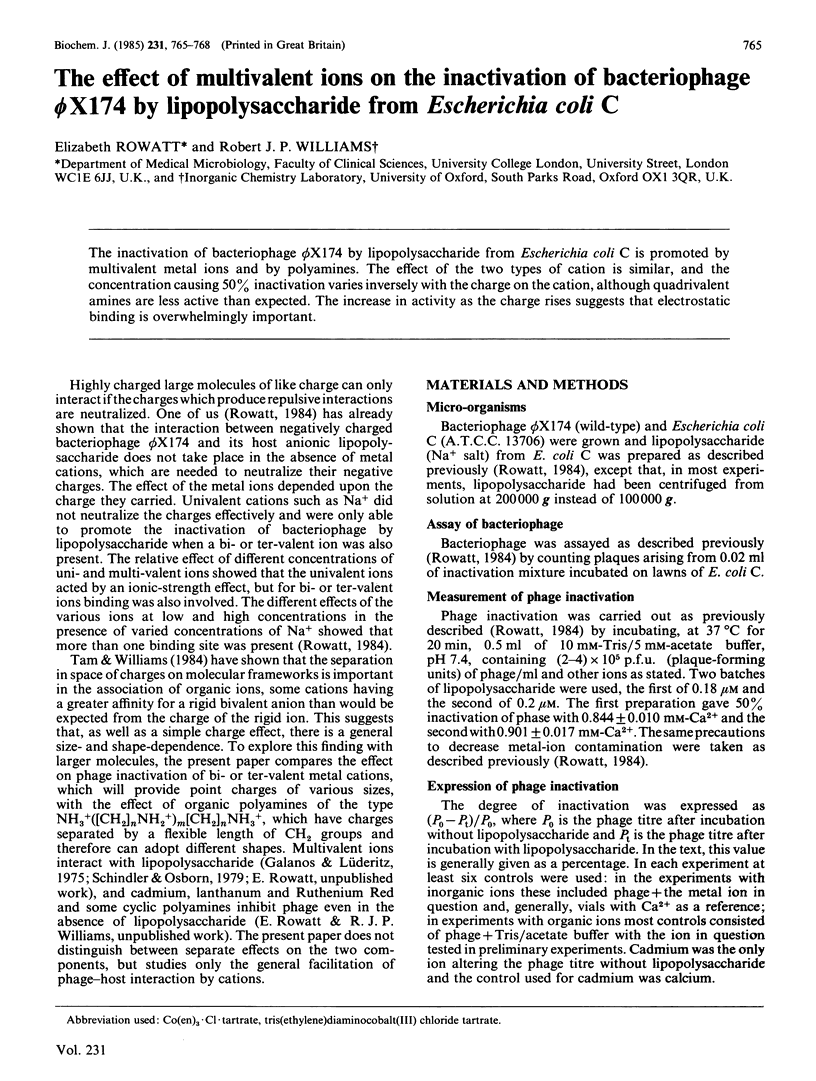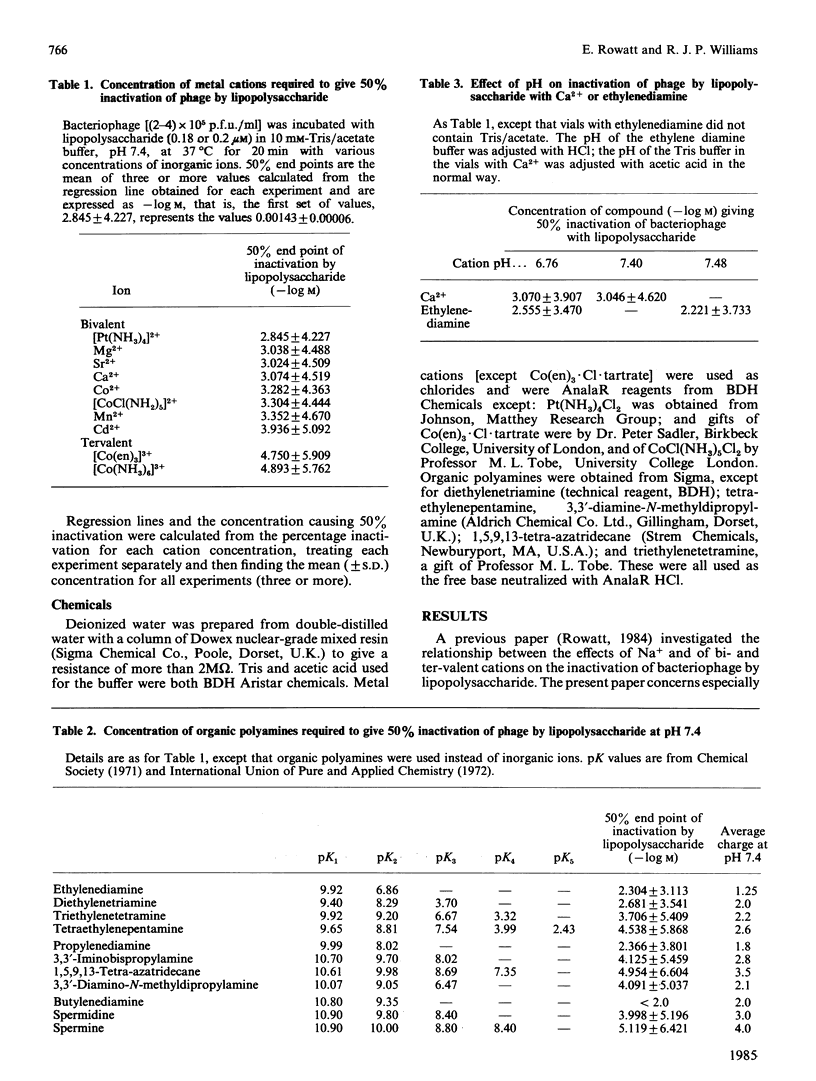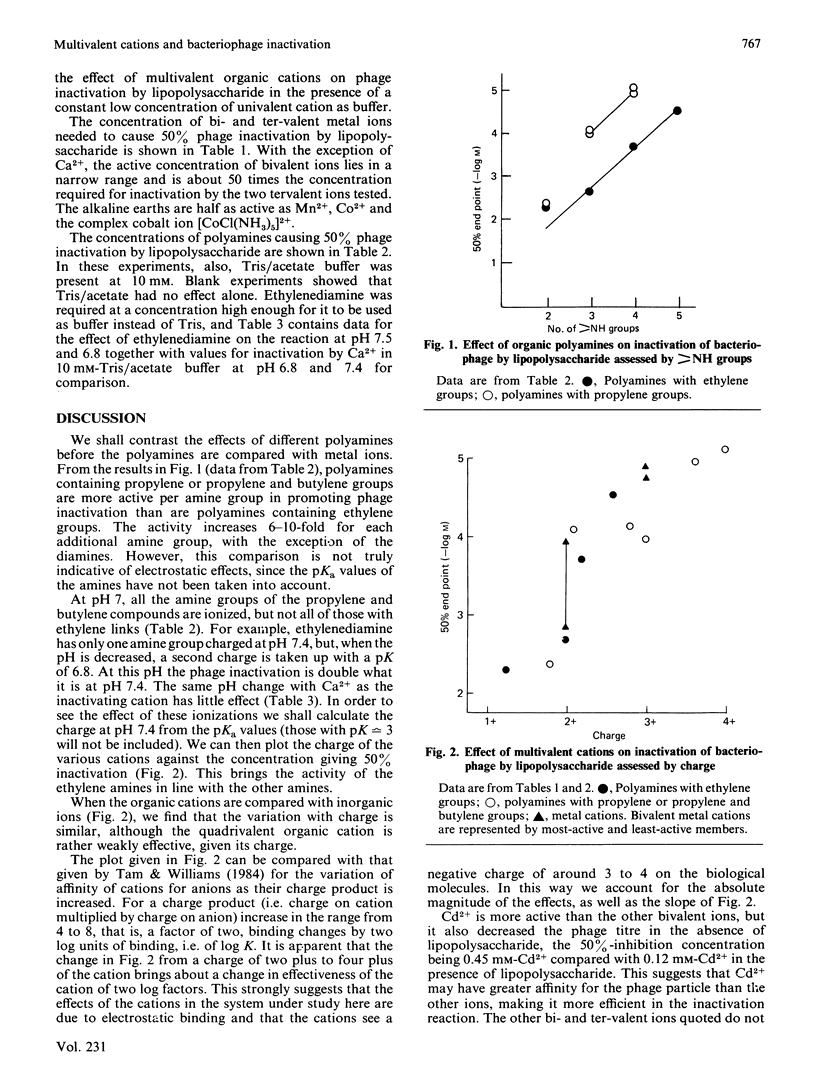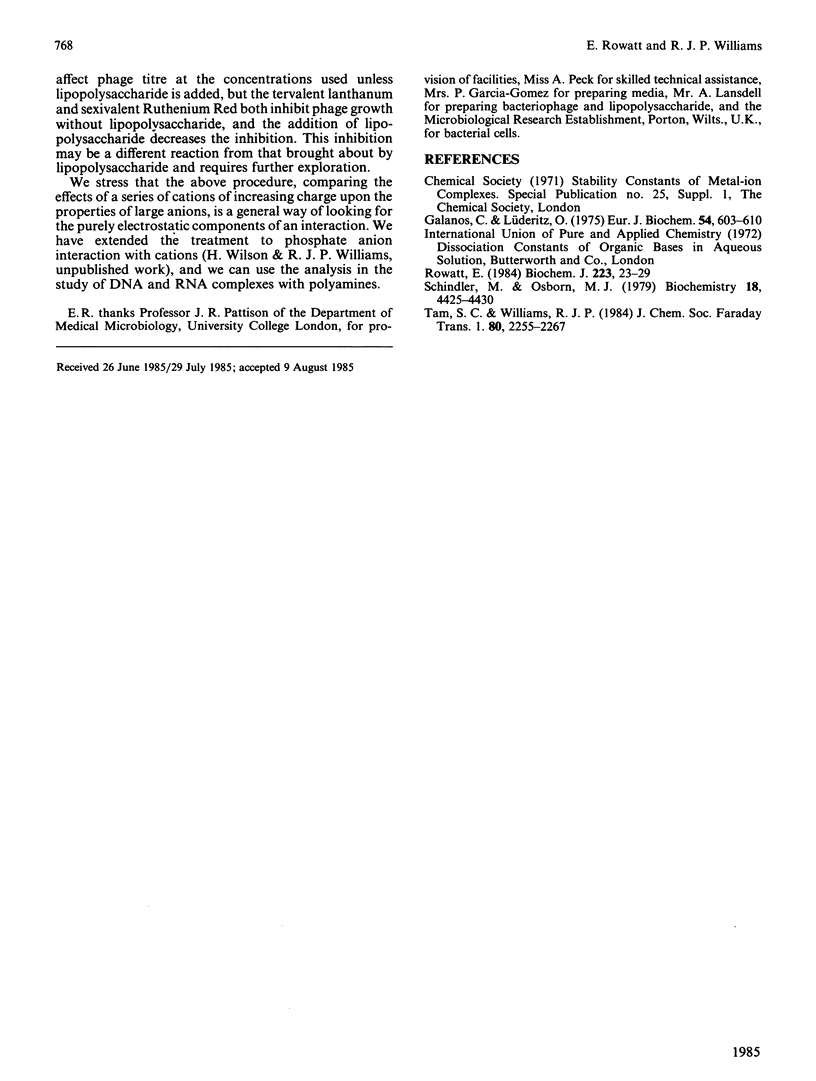Abstract
The inactivation of bacteriophage phi X174 by lipopolysaccharide from Escherichia coli C is promoted by multivalent metal ions and by polyamines. The effect of the two types of cation is similar, and the concentration causing 50% inactivation varies inversely with the charge on the cation, although quadrivalent amines are less active than expected. The increase in activity as the charge rises suggests that electrostatic binding is overwhelmingly important.
Full text
PDF



Selected References
These references are in PubMed. This may not be the complete list of references from this article.
- Galanos C., Lüderitz O. Electrodialysis of lipopolysaccharides and their conversion to uniform salt forms. Eur J Biochem. 1975 Jun;54(2):603–610. doi: 10.1111/j.1432-1033.1975.tb04172.x. [DOI] [PubMed] [Google Scholar]
- Rowatt E. The role of bivalent ions in the inactivation of bacteriophage phi X174 by lipopolysaccharide from Escherichia coli C. Biochem J. 1984 Oct 1;223(1):23–29. doi: 10.1042/bj2230023. [DOI] [PMC free article] [PubMed] [Google Scholar]
- Schindler M., Osborn M. J. Interaction of divalent cations and polymyxin B with lipopolysaccharide. Biochemistry. 1979 Oct 2;18(20):4425–4430. doi: 10.1021/bi00587a024. [DOI] [PubMed] [Google Scholar]


